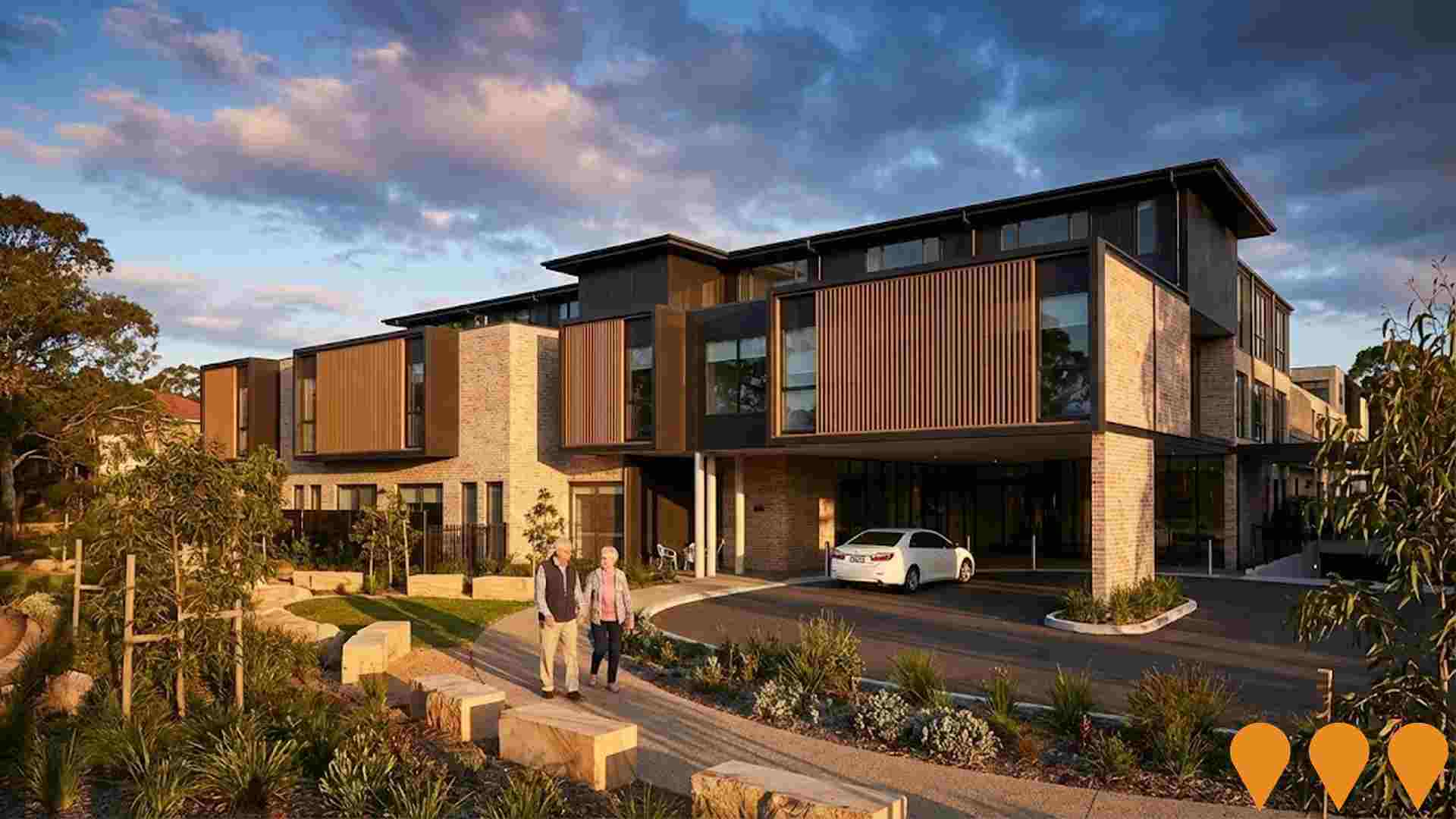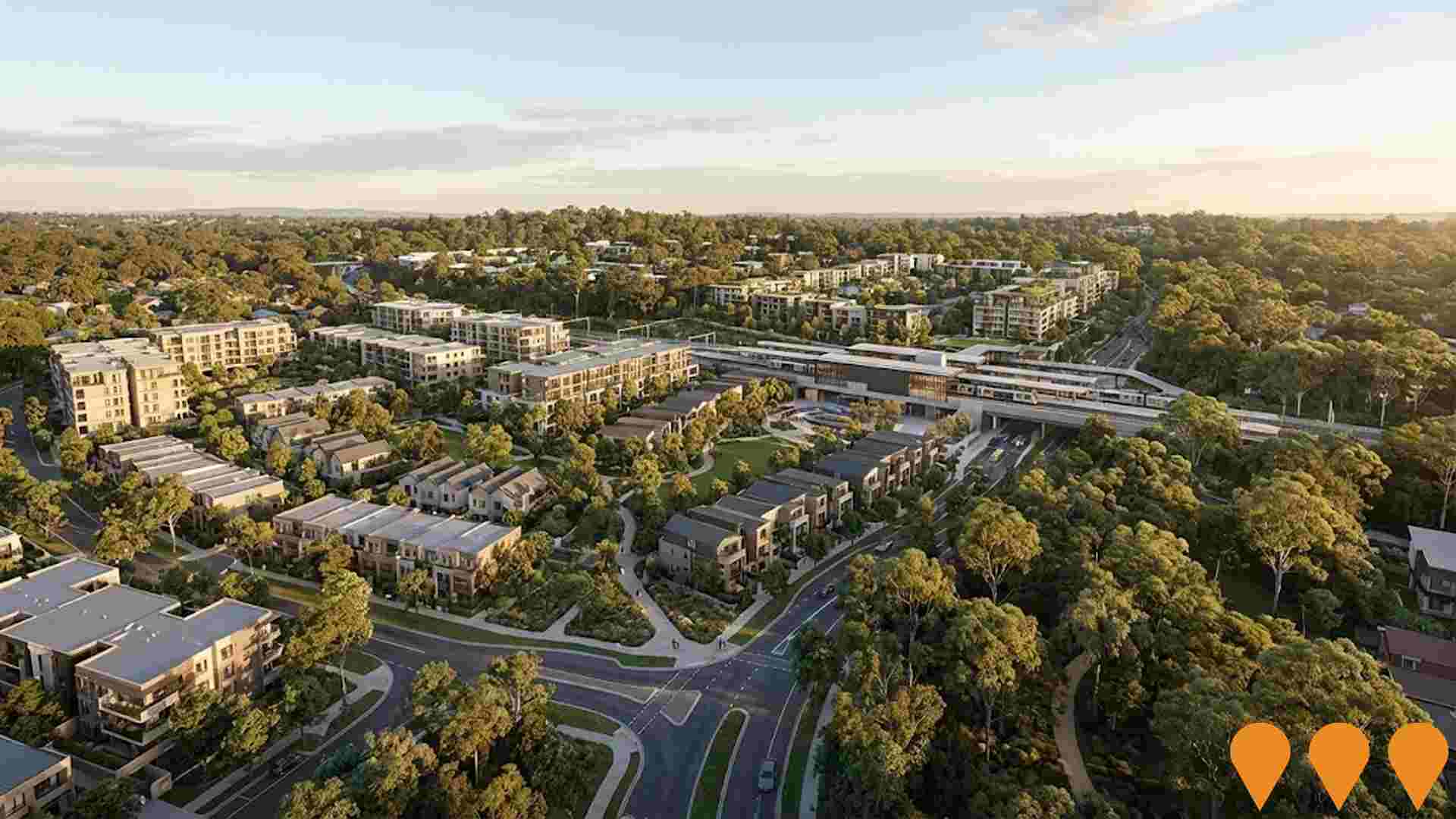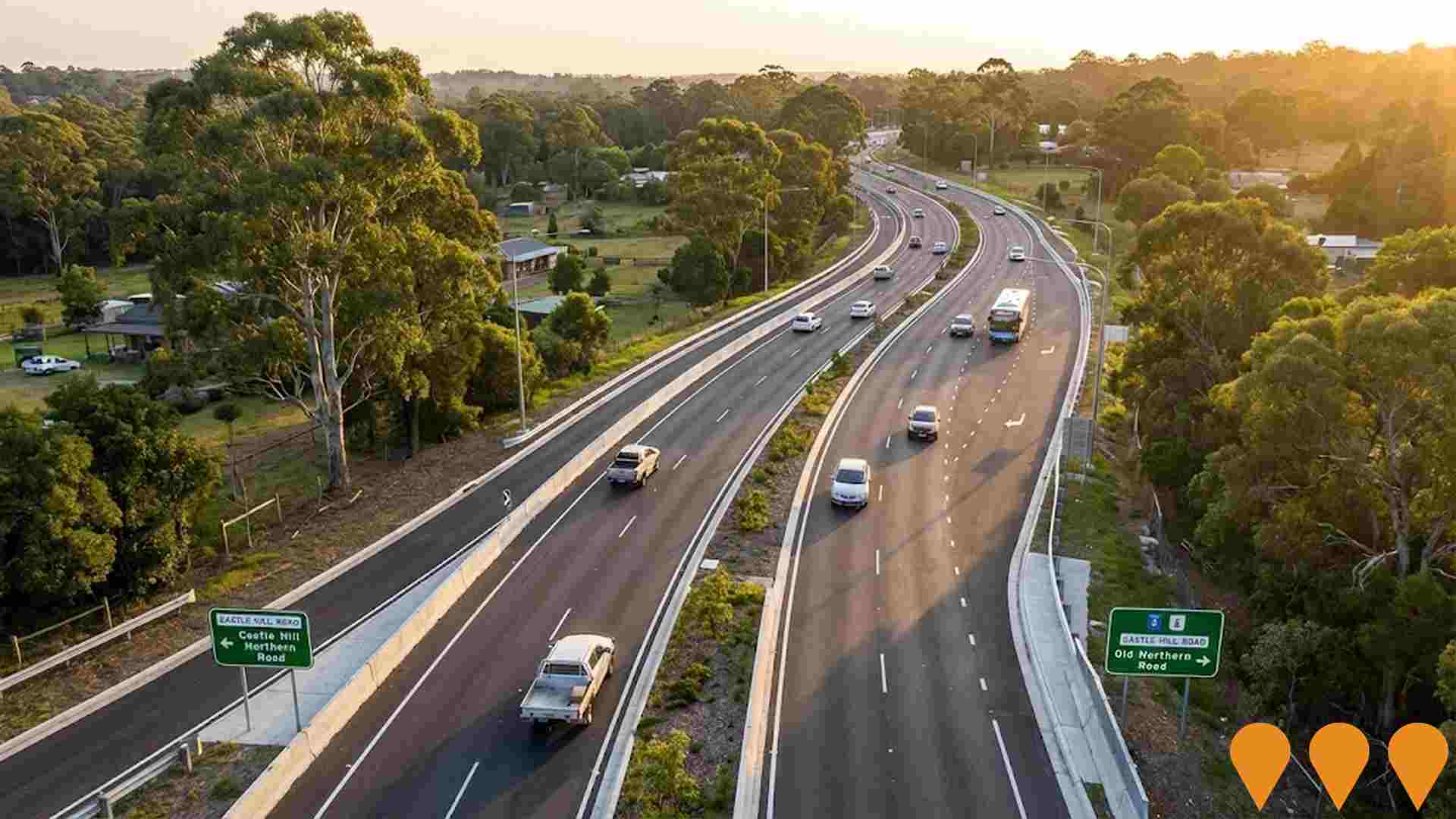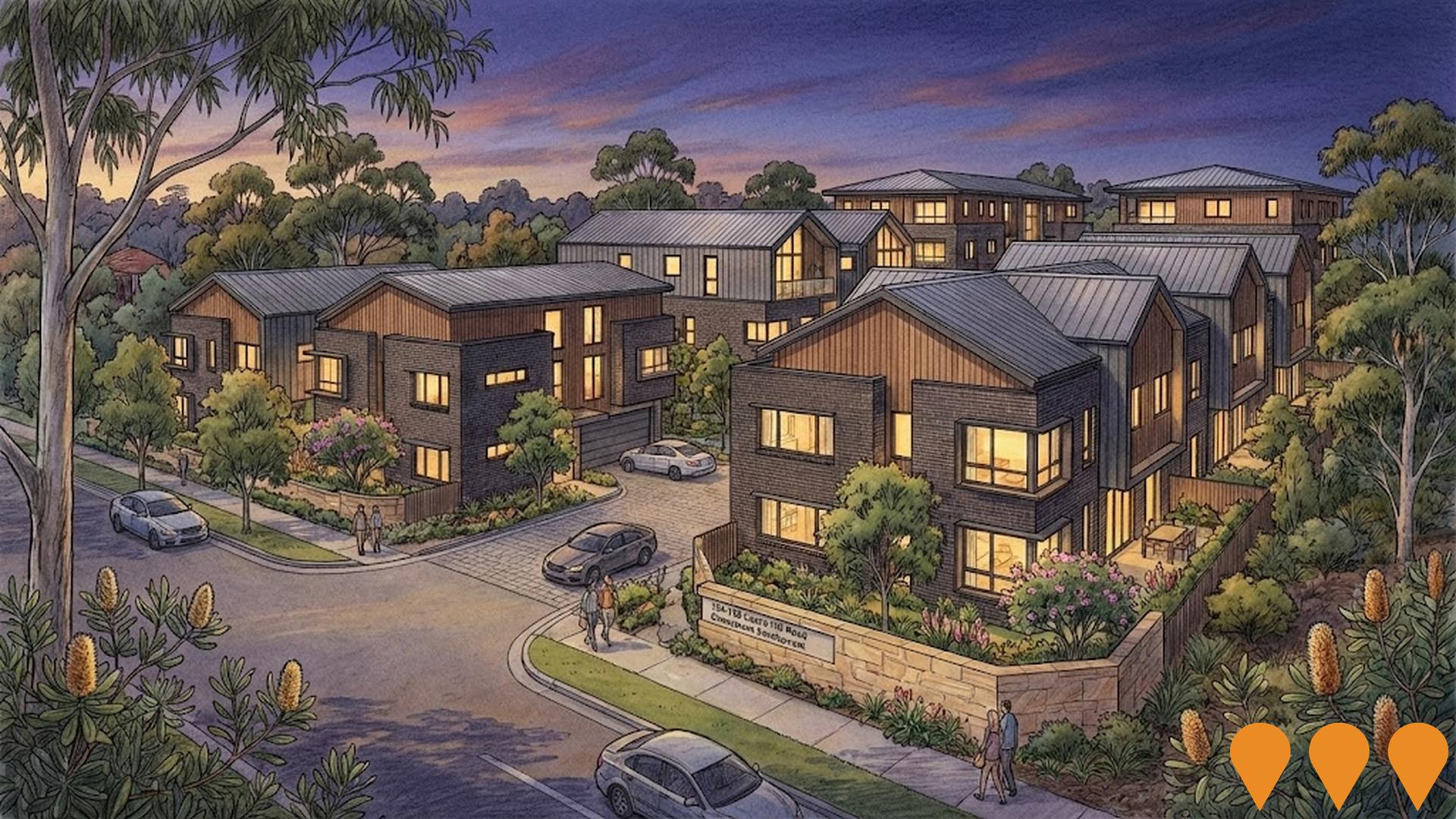Chart Color Schemes
est. as @ -- *
ABS ERP | -- people | --
2021 Census | -- people
Sales Activity
Curious about local property values? Filter the chart to assess the volume and appreciation (including resales) trends and regional comparisons, or scroll to the map below view this information at an individual property level.
Find a Recent Sale
Sales Detail
Population
West Pennant Hills is positioned among the lower quartile of areas assessed nationally for population growth based on AreaSearch's assessment of recent, and medium term trends
West Pennant Hills' population, as of August 2025, is approximately 12,551. This figure represents a decrease of 132 people since the 2021 Census, which recorded a population of 12,683. The change is inferred from ABS estimates showing an estimated resident population of 12,514 in June 2024 and an additional 44 validated new addresses since the Census date. This results in a population density ratio of 1,602 persons per square kilometer, higher than the average seen across national locations assessed by AreaSearch. Overseas migration contributed approximately 82.1% of overall population gains during recent periods.
AreaSearch is adopting ABS/Geoscience Australia projections for each SA2 area, released in 2024 with a base year of 2022. For areas not covered by this data, AreaSearch uses NSW State Government's SA2 level projections, released in 2022 with a base year of 2021. Growth rates by age group from these aggregations are applied to all areas for the years 2032 to 2041. According to population projections, West Pennant Hills is expected to experience a population increase just below the median of national statistical areas by 2041, with an expected expansion of 1,241 persons, representing a total gain of 9.6% over the 17-year period.
Frequently Asked Questions - Population
Development
Recent residential development output has been above average within West Pennant Hills when compared nationally
West Pennant Hills has received approximately 85 dwelling approvals annually. Over the past five financial years, from FY21 to FY25427 homes were approved, with an additional 21 approved in FY26 as of now. Despite a declining population in recent years, this development activity has been adequate relative to other areas.
The average expected construction cost value for new dwellings is $719,000, indicating that developers are targeting the premium market segment. In FY26, there have been $50,000 in commercial development approvals recorded, reflecting the area's predominantly residential nature. Comparatively, West Pennant Hills has around three-quarters the rate of new dwelling approvals per person compared to Greater Sydney. Nationally, it ranks among the 93rd percentile for areas assessed, although there has been an increase in development activity recently. The composition of new developments is 37.0% detached houses and 63.0% attached dwellings, marking a shift from the current housing pattern of 92.0% houses.
This change suggests diminishing developable land availability and responds to evolving lifestyle preferences and housing affordability needs. With approximately 81 people per dwelling approval, West Pennant Hills exhibits characteristics of a low density area. Future projections indicate that West Pennant Hills will add around 1,203 residents by 2041. Based on current development patterns, new housing supply should meet demand, potentially facilitating further population growth beyond current projections.
Frequently Asked Questions - Development
Infrastructure
West Pennant Hills has moderate levels of nearby infrastructure activity, ranking in the top 50% nationally
The performance of an area is significantly influenced by changes in local infrastructure. AreaSearch has identified a total of 15 projects that are expected to impact the area. Notable among these are the Pennant Hills Road and North Rocks Road Intersection Upgrade, the development at 154-158 Castle Hill Road Cherrybrook, Highforest by Mirvac, and the Regis Carlingford Aged Care Facility. The following list details those projects that are likely to be most relevant.
Professional plan users can use the search below to filter and access additional projects.
INFRASTRUCTURE SEARCH
 Denotes AI-based impression for illustrative purposes only, not to be taken as definitive under any circumstances. Please follow links and conduct other investigations from the project's source for actual imagery. Developers and project owners wishing us to use original imagery please Contact Us and we will do so.
Denotes AI-based impression for illustrative purposes only, not to be taken as definitive under any circumstances. Please follow links and conduct other investigations from the project's source for actual imagery. Developers and project owners wishing us to use original imagery please Contact Us and we will do so.
Frequently Asked Questions - Infrastructure
Sydney Metro Northwest
Australia's first fully automated metro rail system and the first stage of Sydney Metro. The 36 km line runs from Tallawong (Rouse Hill) to Chatswood with 13 stations (8 new stations plus the converted Epping to Chatswood rail link). Opened 26 May 2019 with turn-up-and-go services every 4 minutes in peak, platform screen doors and driverless trains. The line has carried over 150 million passenger journeys and now forms part of the extended Sydney Metro network.
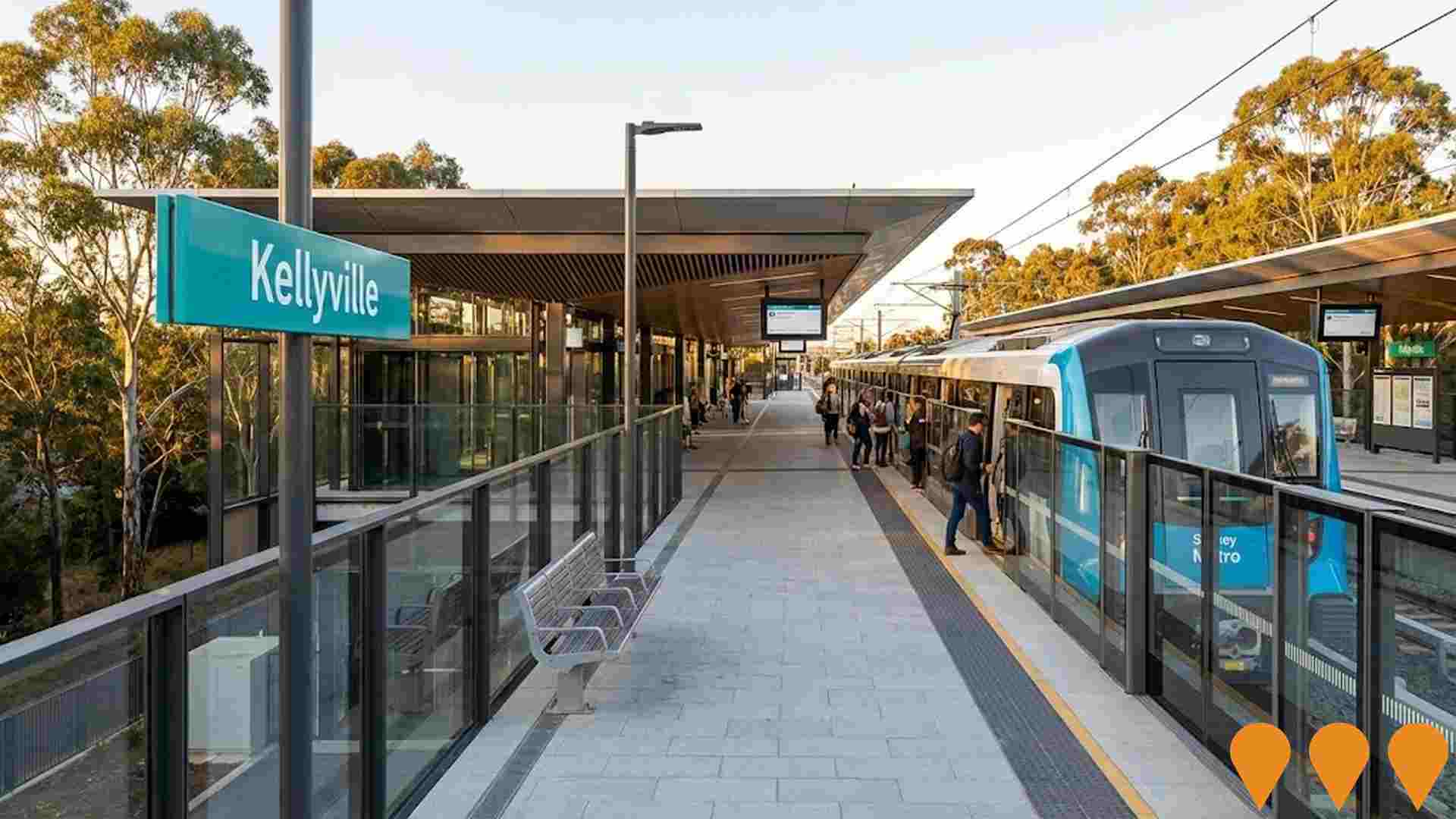
Cherrybrook Precinct Rezoning Proposal
State-led rezoning proposal for the broader Cherrybrook Precinct to create a new town centre and walkable urban community near the Metro station. The plan provides total capacity for up to 9,350 new homes, up to 28-storey maximum building heights, 4.5 hectares of new public open space, and includes mandatory affordable housing (5-10%).

Hills Shire Council Delivery Program and Operational Plan 2024-2025 Infrastructure Works
The Hills Shire Council's 2024-2025 infrastructure program is a significant component of the overall $308.5 million Delivery Program and Operational Plan. The total infrastructure expenditure for 2024-2025 is $162.8 million, focusing on maintaining, renewing, and building new assets like roads, parks, paths, and playgrounds across the Shire to accommodate rapid population growth. Key works include road upgrades (Annangrove Road, Withers Road, Boundary Road), new footpaths, cycleways, bridges, and new and refurbished parks and playgrounds, including Livvi's Place extension at Bernie Mullane Sports Complex. The Council is also actively campaigning for state and federal funding for critical infrastructure, particularly in high-growth areas like Box Hill and the Kellyville/Bella Vista precincts.
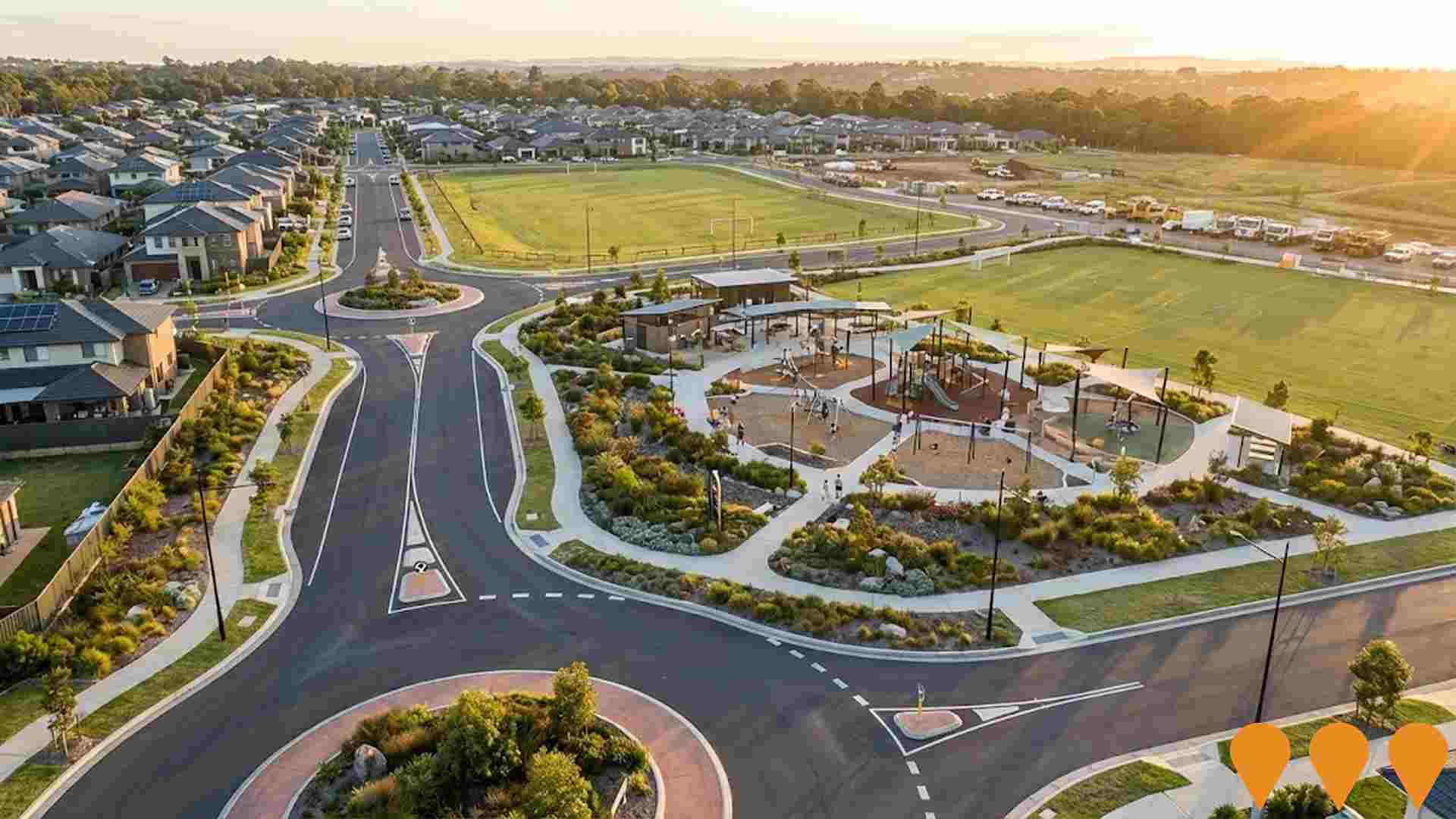
Cherrybrook Metro Station (Completed Infrastructure)
Metro station serving West Pennant Hills, Cherrybrook and surrounding areas. Part of Metro North West Line opened May 2019. Station located on Bradfield Parade near Castle Hill Road, providing direct access to Chatswood and Sydney CBD via the extended Metro network.

North Rocks Shopping Centre Redevelopment
Extension and upgrade of North Rocks Shopping Centre delivering a new full line Coles supermarket, expanded fresh food precinct, new mall area, additional specialty tenancies, and new basement and rooftop parking. The project reconfigured the existing centre to improve circulation and dining, and has been completed and trading since 2019. :contentReference[oaicite:0]{index=0} :contentReference[oaicite:1]{index=1} :contentReference[oaicite:2]{index=2}
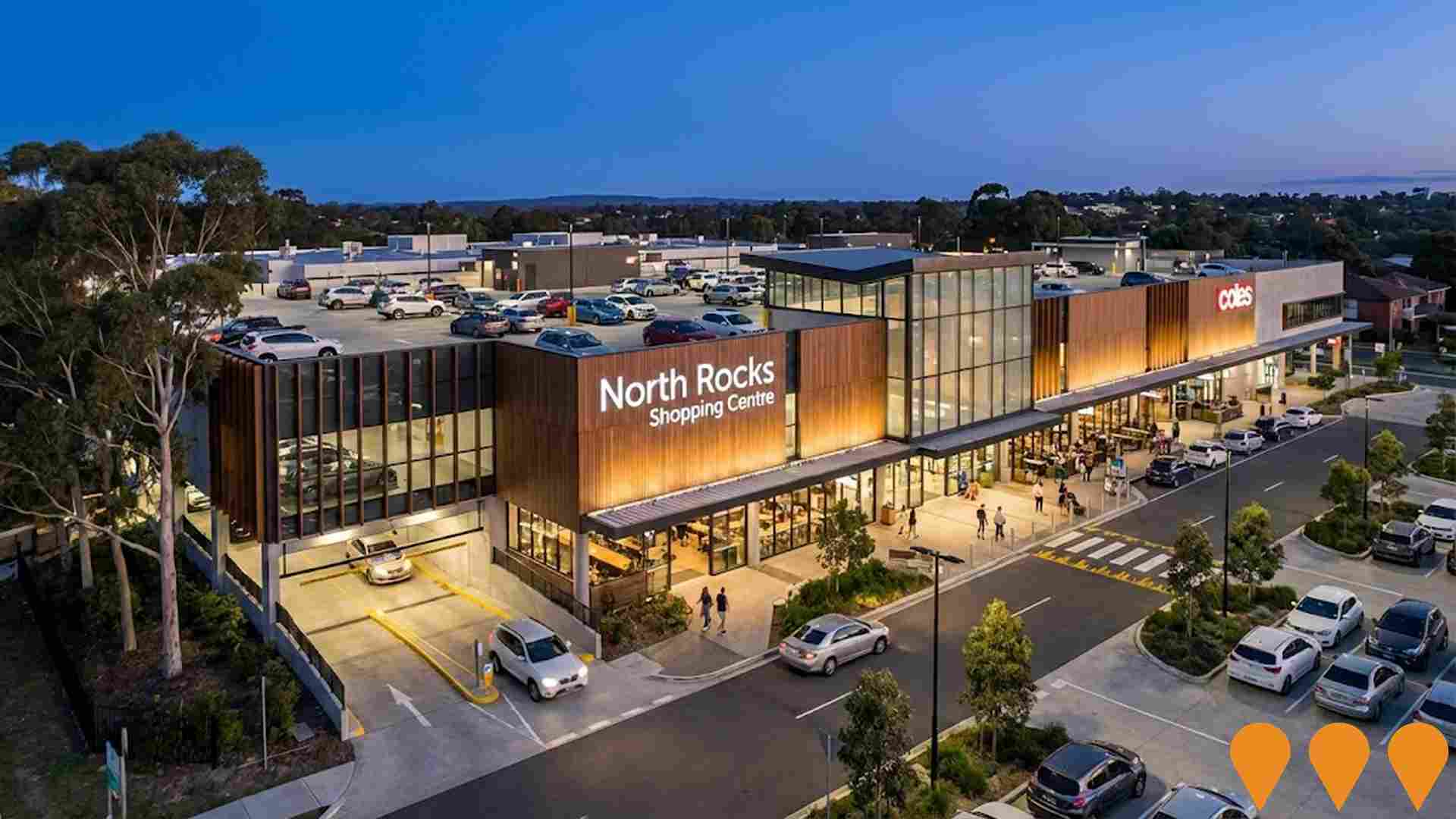
Cherrybrook Station State Significant Precinct
State Significant Precinct (7.7 hectares) led by Landcom on behalf of Sydney Metro, creating a compact green village with up to 410 new homes (minimum 5% affordable housing), 3,000sqm commercial space, 1,300sqm community facility, and over 1 hectare public open space including village square and environmental space around Blue Gum High Forest. Approved December 2022, seeking private developer through competitive tender. Delivery over 10+ years in stages.
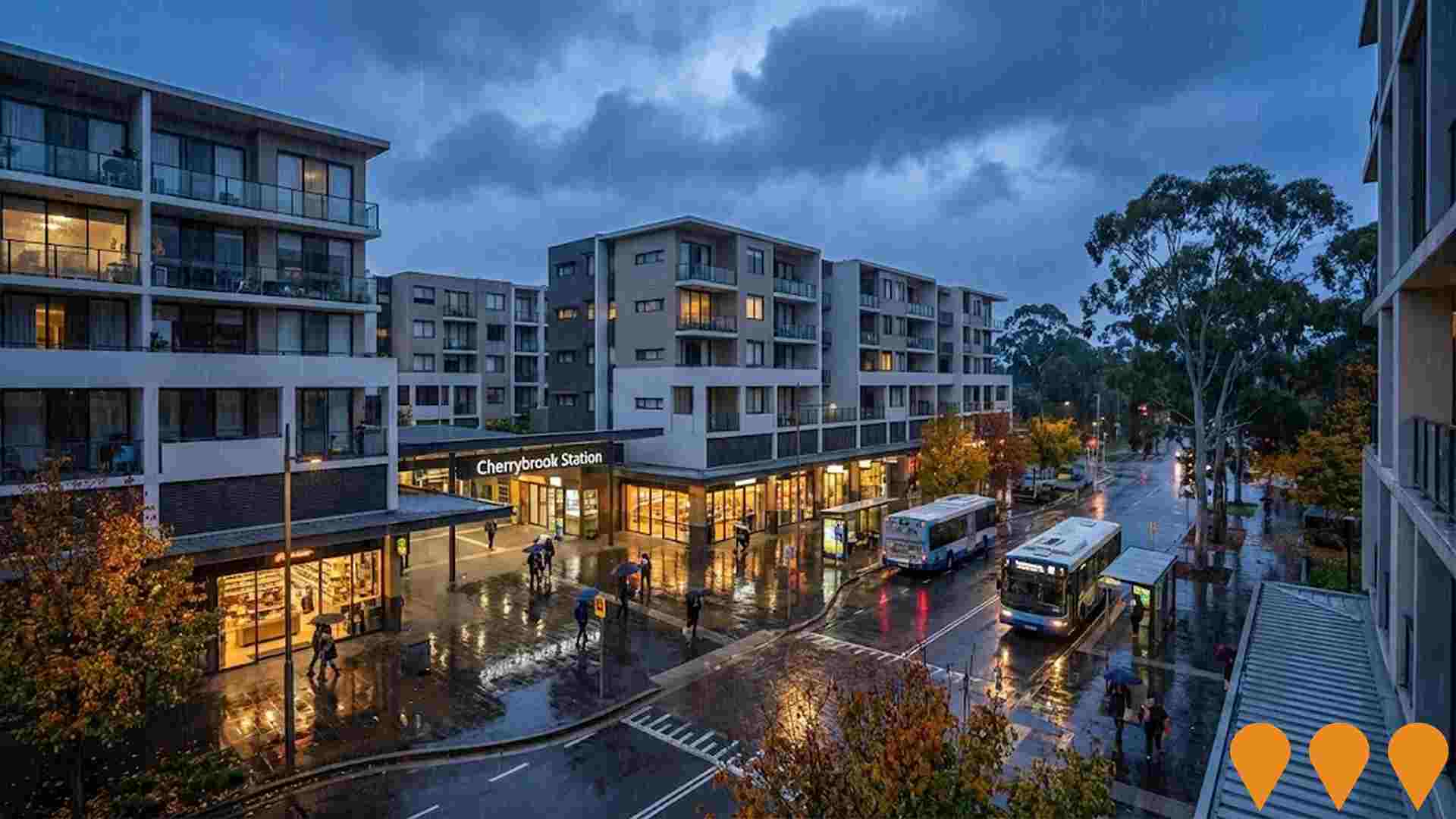
Highforest by Mirvac
Large-scale residential development by Mirvac & Sumitomo Corporation comprising 249 apartments and 165 houses across 25.87 hectares. Features treehouse-inspired apartments in four 7-storey buildings alongside Cumberland State Forest, 800m from Cherrybrook Metro Station. Total project value ~$830 million, targeting 6-star Green Star Communities rating with all-electric homes and solar panels. Construction commenced 2024, completion forecast 2028.
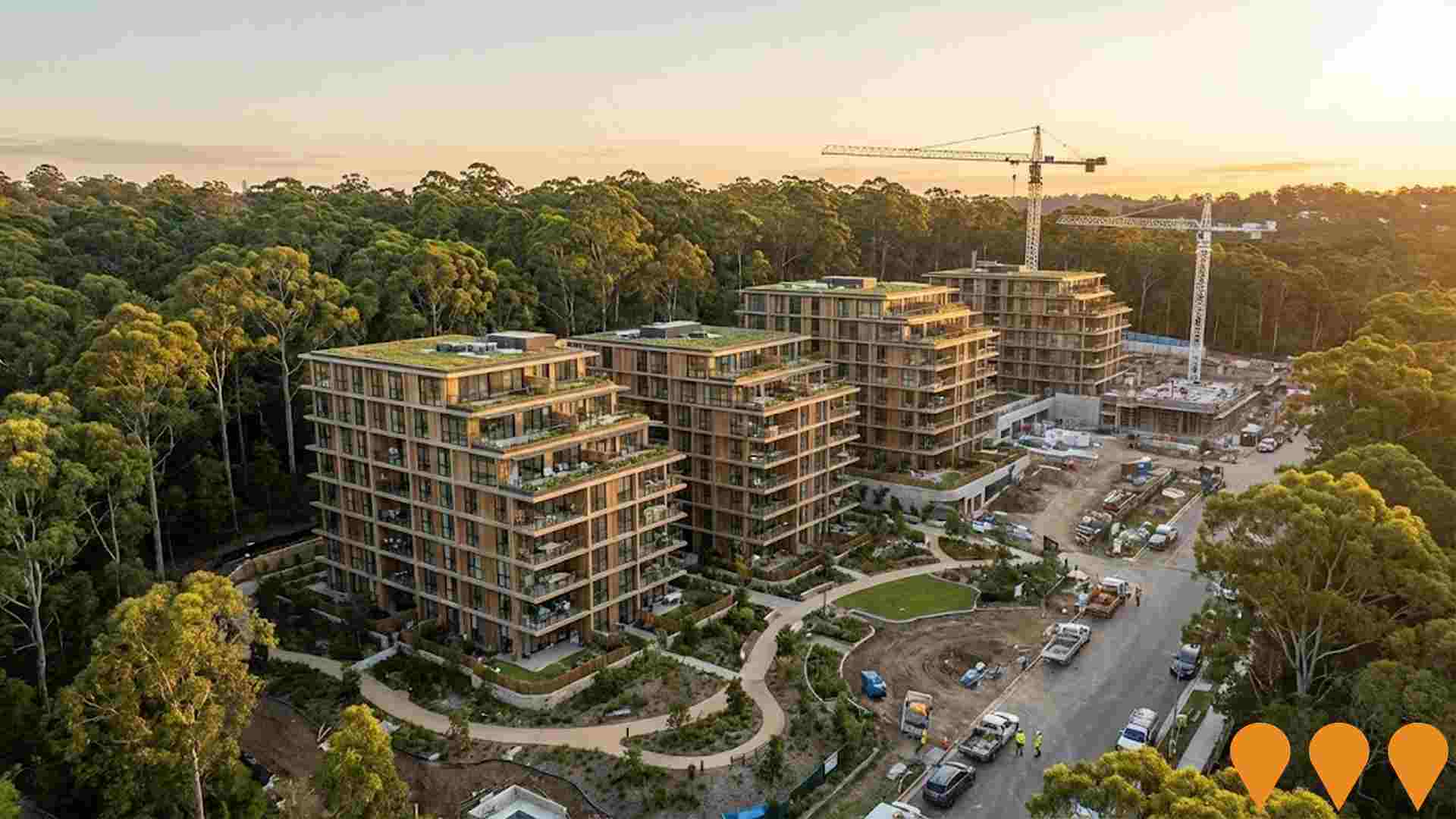
Castle Hill Showground Revitalisation
Comprehensive revitalisation project to create a thriving cultural hub capitalizing on surrounding development and metro connectivity. Will support community, arts, sporting and leisure activities while preserving the showground's heritage and function. Includes new facilities, grandstands, exhibition spaces and community amenities for agricultural shows and events.
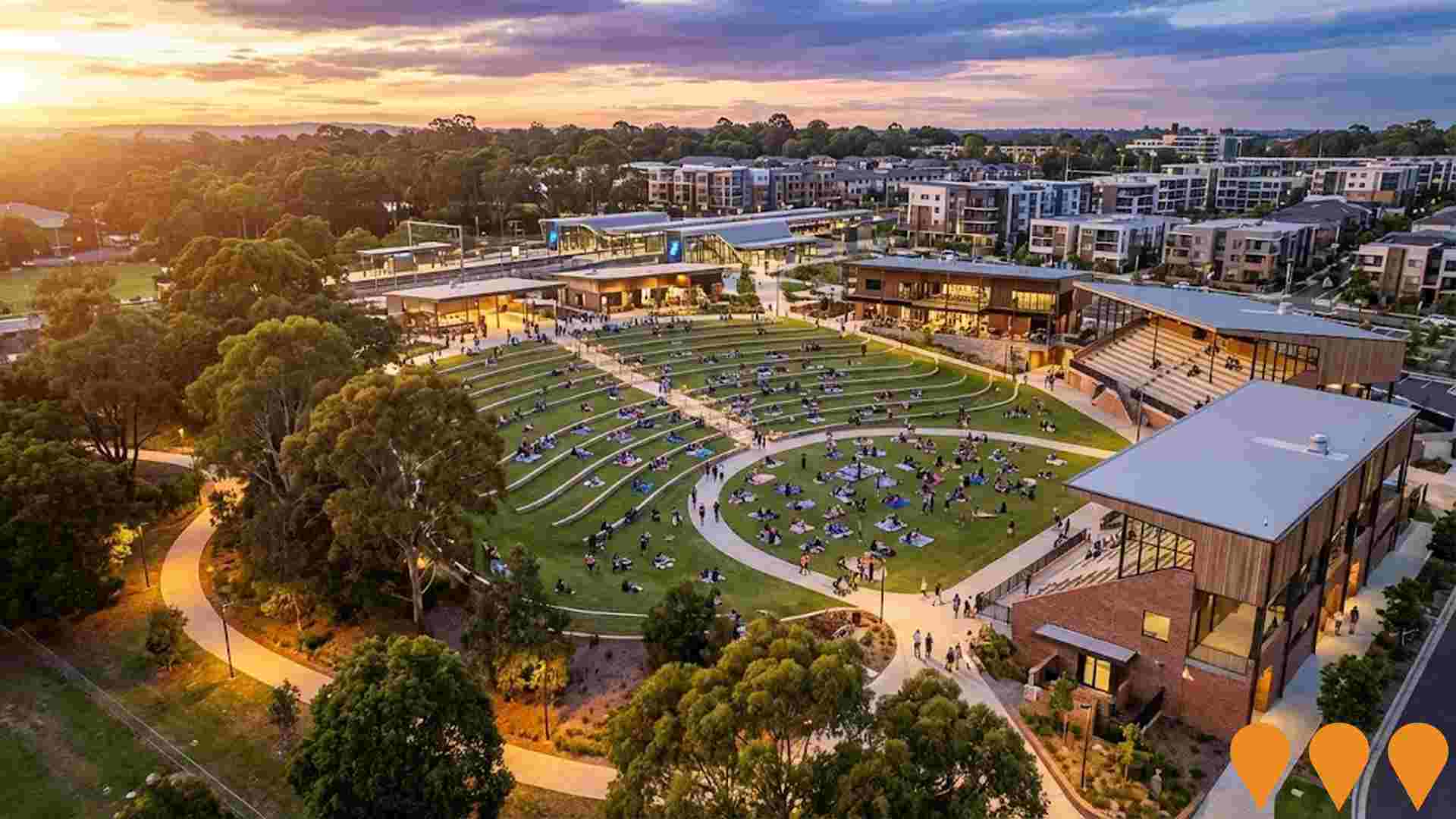
Employment
Employment performance in West Pennant Hills ranks among the strongest 15% of areas evaluated nationally
West Pennant Hills has a highly educated workforce with strong representation in professional services. Its unemployment rate was 2.0% as of June 2025.
Employment growth over the past year was estimated at 2.4%. As of June 2025, 7,100 residents were employed, with an unemployment rate of 2.2%, below Greater Sydney's rate of 4.2%. Workforce participation was 62.5%, compared to Greater Sydney's 60.0%. Dominant employment sectors included professional & technical, health care & social assistance, and finance & insurance.
The area had a particular specialization in professional & technical services, with an employment share 1.3 times the regional level. Conversely, accommodation & food showed lower representation at 3.3% versus the regional average of 5.8%. Employment opportunities locally appeared limited, as indicated by the count of Census working population vs resident population. Between June 2024 and June 2025, employment increased by 2.4%, labour force by 3.1%, causing unemployment to rise by 0.6 percentage points. In Greater Sydney, employment rose by 2.6%, labour force grew by 2.9%, and unemployment rose by 0.3 percentage points. Jobs and Skills Australia's national employment forecasts from May 2025 suggest potential future demand within West Pennant Hills. National employment is forecast to expand by 6.6% over five years and 14.6% over ten years, with local growth estimated at approximately 7.3% over five years and 14.6% over ten years based on industry-specific projections.
Frequently Asked Questions - Employment
Income
Income metrics indicate excellent economic conditions, with the area achieving higher performance than 75% of national locations assessed by AreaSearch
AreaSearch released postcode level ATO data for financial year 2022. West Pennant Hills' median taxpayer income was $60,238 with an average of $99,644. This places it in the top percentile nationally, compared to Greater Sydney's median of $56,994 and average of $80,856. Based on Wage Price Index growth of 12.61% since financial year 2022, estimated incomes as of September 2025 would be approximately $67,834 (median) and $112,209 (average). The 2021 Census ranked household incomes at the 98th percentile ($3,217 weekly). The earnings profile shows that 40.4% of residents earn over $4,000 weekly (5,070 people), unlike regional trends where 30.9% fall within the $1,500 - $2,999 range. Higher earners represent a substantial presence with 53.0% exceeding $3,000 weekly. After housing costs, residents retain 88.5% of income. The area's SEIFA income ranking places it in the 10th decile.
Frequently Asked Questions - Income
Housing
West Pennant Hills is characterized by a predominantly suburban housing profile, with above-average rates of outright home ownership
The dwelling structure in West Pennant Hills, as evaluated at the latest Census, consisted of 91.6% houses and 8.5% other dwellings (semi-detached, apartments, 'other' dwellings), compared to Sydney metro's 78.2% houses and 21.8% other dwellings. The level of home ownership in West Pennant Hills was at 47.2%, with the remaining dwellings either mortgaged (41.4%) or rented (11.3%). The median monthly mortgage repayment in the area was $3,033, exceeding Sydney metro's average of $3,000, while the median weekly rent figure stood at $700 compared to Sydney metro's $580. Nationally, West Pennant Hills' mortgage repayments were significantly higher than the Australian average of $1,863, and rents were substantially above the national figure of $375.
Frequently Asked Questions - Housing
Household Composition
West Pennant Hills features high concentrations of family households, with a higher-than-average median household size
Family households account for 89.8% of all households, including 54.0% couples with children, 28.1% couples without children, and 7.2% single parent families. Non-family households comprise the remaining 10.2%, with lone person households at 9.5% and group households making up 0.5%. The median household size is 3.1 people, which is larger than the Greater Sydney average of 3.0.
Frequently Asked Questions - Households
Local Schools & Education
West Pennant Hills shows strong educational performance, ranking in the upper quartile nationally when assessed across multiple qualification and achievement indicators
Educational attainment in West Pennant Hills is notably higher than national and state averages. 50.1% of residents aged 15 and above have university qualifications, compared to 30.4% nationally and 32.2% in NSW. Bachelor degrees are the most common at 31.8%, followed by postgraduate qualifications (14.9%) and graduate diplomas (3.4%). Vocational pathways account for 21.7% of qualifications, with advanced diplomas at 10.1% and certificates at 11.6%.
Educational participation is high, with 29.7% of residents currently enrolled in formal education. This includes 9.4% in primary education, 8.2% in secondary education, and 7.7% pursuing tertiary education. Hills Montessori School serves West Pennant Hills, with an enrollment of 16 students as of a recent report. The area has significant socio-educational advantages and academic achievement (ICSEA: 1127). There is one school focusing exclusively on primary education in the area, with secondary options available nearby. Local school capacity is limited, with only 0.1 places per 100 residents compared to the regional average of 17.4, leading many families to travel for schooling.
Frequently Asked Questions - Education
Schools Detail
Nearby Services & Amenities
Transport
Transport servicing is high compared to other areas nationally based on assessment of service frequency, route connectivity and accessibility
Transport analysis indicates 122 active transport stops in West Pennant Hills, all of which are bus stops. These stops are served by 88 individual routes, facilitating a total of 5989 weekly passenger trips. Transport accessibility is rated excellent, with residents typically situated 156 metres from the nearest stop.
Service frequency averages 855 trips per day across all routes, equating to around 49 weekly trips per stop.
Frequently Asked Questions - Transport
Transport Stops Detail
Health
West Pennant Hills's residents boast exceedingly positive health performance metrics with very low prevalence of common health conditions across all age groups
Health outcomes data shows excellent results in West Pennant Hills, with very low prevalence of common health conditions across all age groups. The rate of private health cover is exceptionally high at approximately 71% of the total population (8911 people), compared to 63.7% across Greater Sydney and a national average of 55.3%. The most common medical conditions are arthritis and asthma, affecting 6.2 and 6.1% of residents respectively, while 74.5% report being completely clear of medical ailments, compared to 75.9% in Greater Sydney.
The area has 24.2% of residents aged 65 and over (3037 people), higher than the 18.9% in Greater Sydney. Health outcomes among seniors are particularly strong, performing even better than the general population in health metrics.
Frequently Asked Questions - Health
Cultural Diversity
West Pennant Hills is among the most culturally diverse areas in the country based on AreaSearch assessment of a range of language and cultural background related metrics
West Pennant Hills has a high level of cultural diversity, with 43.2% of its population speaking a language other than English at home and 44.2% born overseas. Christianity is the predominant religion in West Pennant Hills, making up 52.8% of people. Hinduism is overrepresented compared to Greater Sydney, comprising 6.0% versus 8.6%.
The top three ancestry groups are Chinese (20.5%), English (17.6%), and Australian (15.1%). Korean (2.1%) and Lebanese (1.9%) are notably more represented than the regional averages of 2.3% and 1.6%, respectively, while Sri Lankan representation is equal at 1.0%.
Frequently Asked Questions - Diversity
Age
West Pennant Hills hosts an older demographic, ranking in the top quartile nationwide
The median age in West Pennant Hills is 44, which is higher than Greater Sydney's figure of 37 and significantly higher than the national norm of 38. The 65-74 age group makes up 14.4% of the population in West Pennant Hills, compared to a lower percentage in Greater Sydney. However, the 25-34 cohort is less prevalent at 7.0%. According to the 2021 Census, the 75 to 84 age group has increased from 5.1% to 7.8%, while the 55 to 64 cohort has decreased from 15.8% to 13.8%. The 25 to 34 group has also dropped from 8.2% to 7.0%. By 2041, demographic modeling suggests significant changes in West Pennant Hills' age profile. The 85+ group is projected to grow by 244%, reaching 890 people from 258. This growth will be led by the aging population dynamic, with those aged 65 and above comprising 77% of the projected growth. Conversely, the 0 to 4 and 55 to 64 cohorts are expected to experience population declines.
